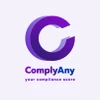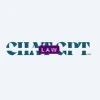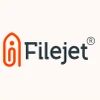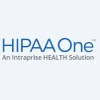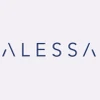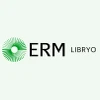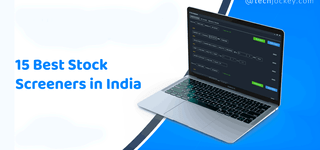Best Regulatory Compliance Software For 2025: Compare Tools, Features & Pricing
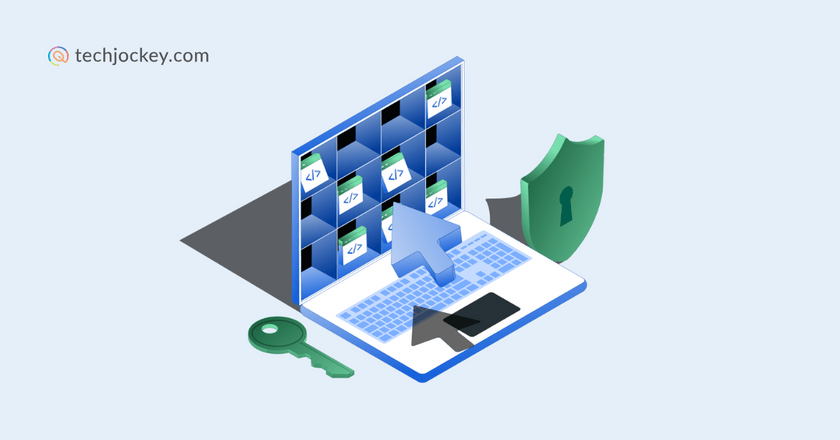
What is Regulatory Compliance Software?
Regulatory compliance software helps businesses comply with all required laws, industry rules, and standards. Rather than keeping all the information in their minds, this software allows users to keep up with every change in the law.
It allows companies to control key documents, identify threats, and ensure their processes are correct. For example, it can send updates to staff on new laws as well as point out errors that require attention.
Using this software, organizations can avoid penalty costs, maintain their public image,
Why Regulatory Compliance Software is Needed?
- Keeps You Updated with Changing Laws: Since laws can change at any time, the software helps you meet compliance requirements whenever they change.
- Reduces Risk of Costly Mistakes: Automation helps prevent mistakes that could result in penalties from laws.
- Avoids Fines and Legal Trouble: Adhering to rules helps your company avoid trouble with the law, financial fines, and being criticized in the media.
- Saves Time with Automation: Automated features free up time for employees because these functions do not need their direct control.
- Protects Customers and Stakeholders: Practicing law and ethics gives customers and stakeholders a sense of safety and trust.
- Builds Trust and a Good Reputation: Being compliant helps others view your organization as trustworthy and dependable.
- Opens New Business Opportunities: Being in compliance helps you work with larger businesses and increase your business services elsewhere.
- Keeps Sensitive Data Safe: Network Security Solutions are used by organizations to stop hackers and thieves from getting at their sensitive data.
- Improves Risk Management: Makes risk handling more effective, as compliance issues are addressed without delay.
- Makes Audits Easier: As records are properly organized in compliance software, audits are less challenging and can be managed easily with the help of Audit Management Software.
Quick Comparison of the Best Regulatory Compliance Software
| Software | Key Details |
|---|---|
| AuditBoard | Best for enterprises; SOX compliance & audit automation |
| Sprinto | Ideal for SaaS & SMBs; fast SOC 2, ISO, HIPAA setup |
| Secureframe | Great for cloud startups; real-time compliance monitoring |
| Complinity | Built for Indian companies; local law & audit tracking |
| Libryo | Perfect for global firms; jurisdiction-specific legal alerts |
| MetricStream | Best for corporates; scalable GRC & policy management |
| Ideagen | Suited for regulated sectors; quality + compliance control |
| SAI360 | GRC + ESG solution; risk dashboards & mobile support |
Top 8 Best Regulatory Compliance Software
1. AuditBoard
AuditBoard is a tool designed on the cloud specifically for those in the audit, risk, and compliance fields. It allows businesses to manage their internal audits, assess risks, ensure SOX compliance, and manage risks throughout the organization in a joined and effective way.
It allows companies to check that they are following proper governance rules and makes easy the complex processes involved in tracking compliance. In such enterprises, where rules are strict and often change, the system provides real-time information and allows effective risk management throughout the company

AuditBoard
Starting Price
Price on Request
Key Features:
- SOX compliance automation
- Risk and control matrix
- Audit management workflow
- Real-time dashboards and reporting
- Compliance calendar and task assignment
Pros
- Easy to navigate UI
- Strong collaboration tools
- Centralized data tracking
Cons
- Expensive for smaller teams
- Steep learning curve
- Limited offline functionality
2. Sprinto
Sprinto is a current compliance automation system created for fast-growing companies in the SaaS and cloud sectors. It makes it easier to get certifications such as SOC 2, ISO 27001, HIPAA, and GDPR by taking on repetitive tasks such as collecting evidence, carrying out control tests, and doing documentation.
Providing security and speed, Sprinto is set up to handle compliance automatically, and this reduces manual work and human mistakes. As a result, it helps startup and mid-sized businesses prepare efficient audits even without a large team focused on compliance.

Sprinto
Starting Price
Price on Request
Key Features:
- Built-in compliance frameworks
- Automated monitoring and alerts
- Evidence collection automation
- Integration with cloud tools
- Risk-based controls
Pros
- Fast onboarding and setup
- Strong for audit readiness
- Seamless integrations
Cons
- Less effective for non-cloud firms
- Limited support for custom frameworks
- May lack in-depth customization
3. SecureFrame
SecureFrame is designed to automatically manage the steps required to comply with industry guidelines such as SOC 2, ISO 27001, HIPAA, and GDPR. It is mainly designed for startups and mid-sized businesses that wish to have top-level security for their systems but do not have dedicated teams to manage it.
Through SecureFrame, the work on compliance is fully automated, audits are scheduled ahead and crucial documents are stored in real time. The platform serves as a sole and accurate place for compliance, offering live monitoring and frequent updates as new rules are created.

Secureframe
Starting Price
Price on Request
Key Features:
- Real-time compliance monitoring
- Vendor risk management
- Policy generation and tracking
- Automated employee security training
- Cloud integrations and alerts
Pros
- Strong automation capabilities
- Clean, user-friendly interface
- Quick implementation
Cons
- Premium pricing tier
- Offline access limitations
- Not ideal for complex orgs
4. Complinity
Complinity is mainly designed as a compliance and governance system for businesses in India. It supports companies by handling statutory compliance, reviews of risks, auditing and setting internal rules all through the same system. The platform is best for businesses that work in different markets and require organization when following Indian laws.
With Complinity, you can track all the compliance duties of your organization, receive notifications about approaching deadlines, and use orderly workflows for validating documents. It offers assistance to compliance officers and legal teams, enabling them to cut down on penalties and become more accountable.

Complinity
Starting Price
Price on Request
Key Features:
- Compliance calendar and alerts
- Risk and internal audit management
- Document repository
- Legal case tracking
- Reporting and dashboards
Pros
- Affordable for SMBs
- Designed for Indian compliance
- Customizable to business processes
Cons
- UI could be more modern
- Not ideal for global companies
- Limited third-party integrations

5. Libryo
Libryo enables companies to identify and follow the precise laws and regulations that apply to them in specific places. It eliminates uncertainty since customized legal registers are given depending on where, in what industry, and how the business operates. This becomes very helpful for companies that do business in several countries and territories.
Libryo regularly keeps informed about new legal developments and shares this with teams on time, so no missed regulations can cause problems in complying with laws. Global Regulations is made for teams handling legal, compliance, and EHS responsibilities, as it provides clear information on worldwide regulations.

Libryo
Starting Price
Price on Request
Key Features:
- Custom legal registers
- Real-time legal updates
- Multi-jurisdiction compliance
- Risk identification and alerts
- Centralized document management
Pros
- Excellent for international firms
- Real-time legal change alerts
- Intuitive interface
Cons
- Focuses mostly on regulatory tracking
- Some integrations require effort
- Limited offline capability
6. MetricStream
MetricStream makes it possible for companies to manage their governance, risk, and compliance (GRC) on an enterprise level. It enables organizations to use risk data, assess themselves, follow the rules, and manage audits all in the same system. MetricStream is built with modules that companies can add according to their own GRC requirements.
Since risk management and compliance play such a big role for important and highly regulated companies, ERP systems are best suited for them. With its advanced data analysis and personalized dashboards, data-based choices can be made, and the organization stays transparent.

Metricstream GRC Software
Starting Price
Price on Request
Key Features:
- Integrated GRC platform
- Compliance risk assessments
- Policy lifecycle management
- Workflow automation
- Real-time analytics
Pros
- Ideal for large enterprises
- Scalable and modular
- Strong analytics and reporting
Cons
- High implementation complexity
- Requires significant training
- Cost may be prohibitive for SMEs
7. Ideagen
Ideagen provides software that handles quality, audit, and compliance needs for heavily controlled fields such as aviation, healthcare and manufacturing. The system helps manage the organization’s files, review them through audits, and keep track of employee progress in compliance training.
The company’s greatest benefit is in combining quality control with meeting compliance requirements, which enables organizations to operate efficiently and follow worldwide standards. The software keeps all necessary details like audit trails, actions taken for corrections, and risks well-organized.

Ideagen Huddle
Starting Price
Price on Request
Key Features:
- Document and audit control
- Quality and compliance reporting
- Corrective action tracking
- Training and certifications
- Regulatory workflow management
Pros
- Industry-specific modules
- Great audit trail features
- Suits both cloud and on-premise
Cons
- The interface may feel outdated
- Some features require manual setup
- Limited third-party integrations
8. SAI360
SAI360 is a complete system that helps manage governance, risk, and compliance (GRC) along with environmental, social and governance (ESG) tasks. It takes care of risk evaluations, offers ethics training, manages policies, and does other tasks as well.
Its adaptable structure allows SAI360 to serve several types of industries and the rules they must follow. It is meant to help companies handle any changes in regulation, promote a strong compliance mindset, and guarantee that their activities are clear and have a focus on safety.

Sai360 (Formaly BWise)
Starting Price
Price on Request
Key Features:
- GRC and ESG risk modules
- Policy and ethics training
- Compliance tracking and audit tools
- Real-time risk dashboards
- Mobile support
Pros
- Holistic GRC and ESG coverage
- Mobile access and modern UI
- Great for multinational compliance
Cons
- Setup and customization take time
- Pricing may be high for SMBs
- The interface can be complex initially
How to Choose the Right Regulatory Compliance Software?
- Know What Your Business Needs: Make sure the software matches the industry’s and your company’s needs for accountability.
- Check If It’s Easy to use: The software should be simple to figure out, so your team doesn’t have to spend time learning how to use it.
- Make Sure It Grows With You: Select a software that is prepared to grow as your business expands and needs new compliance measures.
- Look for Strong Integrations: It is important that the software is easy to use with the tools you have now, to help you keep data organized and error-free.
- Ensure Good Vendor Support: Select a vendor with dependable support systems and a good public image to avoid stress when you have questions.
- Prioritize Security and Alerts: It should be able to provide security for your documents and notify you promptly about compliance, deadlines, or risks.
- Consider Automation and Reporting: Look for software that does the work automatically and can produce transparent reports to make things easier.
Conclusion
Picking the perfect regulatory compliance software in 2025 will greatly help your business stay compliant, smooth, and safe. Given the new rules and laws, you require a tool that can handle your line of business, expand with time, and consolidate all your data.
Since regulatory compliance is a subset of legal compliance, choosing the right legal compliance software ensures your business is covered on all fronts, from industry regulations to broader legal obligations.
Any business, regardless of its size, can benefit from the right software by saving time, reducing dangers, and avoiding costly mistakes. These platforms send notifications and generate audit-ready reports, making compliance more manageable and efficient.
FAQ’s
What best defines regulatory compliance?
Following the rules and laws set by authorities to run your business legally, safely, and without getting fined.
What is ERP in regulatory compliance?
ERP helps businesses follow laws by managing records, tracking processes, and ensuring accurate reports using one central software system.
How do you automate regulatory compliance?
Use software to automatically track rules, generate reports, send alerts, and ensure all business actions meet legal requirements.
What are the 4 methods of compliance?
Follow laws, enforce company rules, train staff, and use monitoring tools to prevent violations and stay legally safe.
What is the cost of regulatory compliance?
Regulatory compliance software typically costs $1,200–$300,000+ annually, depending on company size, industry, features, and chosen deployment method.
How does Regulatory Compliance Software work?
It tracks laws, manages documents, sends alerts, and ensures your business actions follow legal and safety rules automatically.
Who Uses Regulatory Compliance Software?
Businesses in healthcare, finance, manufacturing, and more use it to avoid fines and meet industry and government regulations.
Sweety Sharma is a skilled content writer with expertise in crafting engaging content across various platforms, including websites and social media. Since 2018, she has written extensively on topics such as cryptocurrencies, stocks, nutrition, investment, technology, real estate, marketing, and many more. During her journey, Sweety has improved... Read more







